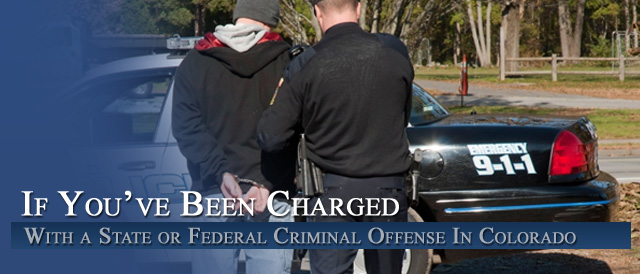


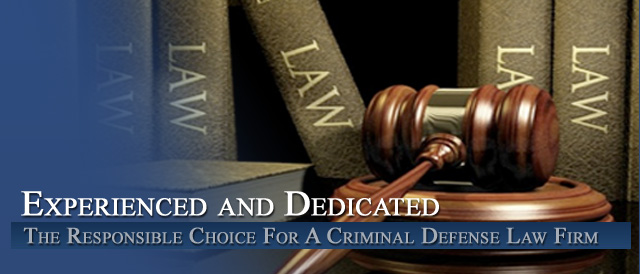
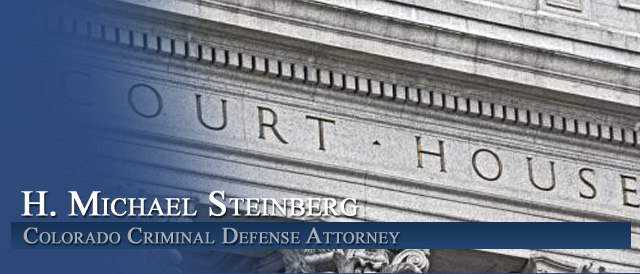
Never Ever Make A Statement To The Police – One Reason – They Can Read Your Non-Verbal Cues
By H. Michael Steinberg Colorado Criminal Defense Lawyer – Email The Author
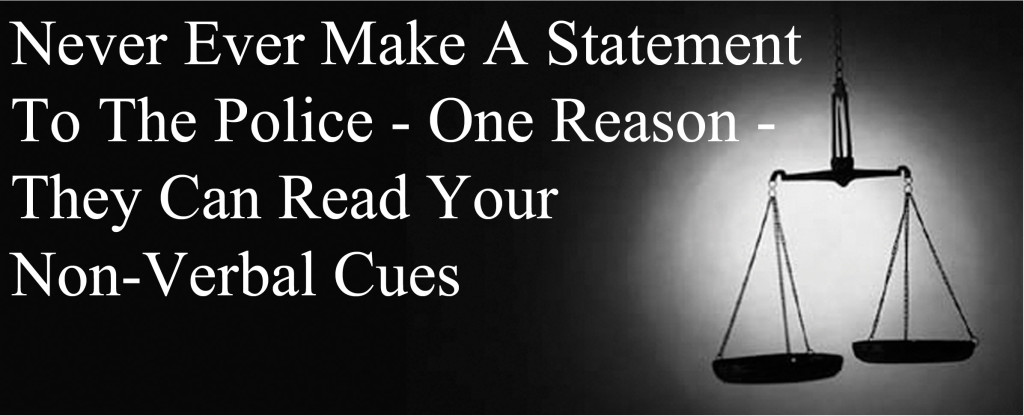 Never Ever Make A Statement To The Police – One Reason – They Can Read Your Non-Verbal Cues – We are taught from a very young age that the police are our friends – and that is true – but as early as adolescence and into adulthood – when under investigation for a crime – that presumptive rule is no longer true.
Never Ever Make A Statement To The Police – One Reason – They Can Read Your Non-Verbal Cues – We are taught from a very young age that the police are our friends – and that is true – but as early as adolescence and into adulthood – when under investigation for a crime – that presumptive rule is no longer true.
My Advice – LAWYER UP
When you cooperate with the police and give them an interview -were you wringing your hands – were you looking away, up and to the left, avoiding direct eye contact? Did your voice slow when you when you were discussing other “persons of interest.” Was your left eyebrow twitching, and when you spoke about the incident did you use terms such as “and that’s about it.” If you did any of these things – it may be the kind of communication that the police interpret as deception.
This article addresses the other side of verbal statements made to the police – nonverbal cues that can be “read” by law enforcement investigators in the same way as the words that are verbally spoken
What Is A Behavioral Anomaly?
In the words of the FBI – behavioral anomalies are “verbal and nonverbal signs of cognitions and emotions that provide additional clues to what an individual is thinking and feeling beyond the content of the words being spoken. In the context of investigative interviewing, these behavioral anomalies are called indicators.”
Law enforcement use these anomalies to provide cues and insight into the personality, motivation, and intention of the suspects they are interviewing. In short – they use them to figure out whether a suspect is lying or telling the truth.
The police can “interpret” these non-verbal cues during an interrogation to provide additional information to be used against the suspect. At the time of an interrogation – if you are the one being interrogated – you may be telling the police more than you intended.
Interpretation Of Non-Verbal Cues – Science Based?
When the police are attempting to “read” your behaviors – they look for “validated and non-validated indicators.” The FBI claims that “validated indicators” are grounded in solid science which science has been used to document the association between the behavior and specific cognitions or emotions. On the other hand “non-validated indicators” are not supported by “science.”
Validation means that the indicator is accurate and consistent across various people and in different contexts. In order for an indicator to be validated – the theory underlying the indicator must be established under conditions in which the indicator across multiple people in the same context. For the indicator to be validated there has to be “scientific consistency.”
An example of a “validated indicator” is the flash of the eyes so that the white above the iris is visible. This is considered a “validated indicator’ which demonstrates concealed fear. An example of a “non-validated indicator” is when an individual looks up to the left along with a twitching of the left eyebrow. This is NOT an accepted valid indicator as proof of lying – even though many people believe it is.
When so called “motivated people” lie under stress upon facing possible serious consequences certain deception cues emerge and appear as leakage across multiple channels. These are facial expressions, gestures and body language, voice, and verbal style. A fifth leakage channel – not the subject of this article are the actual words spoken—verbal statements.
Nonverbal cues change over time from what police say they can set as a person’s baseline. When these cues combine with the individual’s words they can be used to accurately differentiate between lying and truth telling.
NON VERBAL Behaviors (NVBs)
This same research supports the proposition that certain emotions and cognitions are communicated through facial expression, voice tone, gesture, body movement, and posture
“NVB “indicators happen as a result of “conflicting thoughts and feelings transpire when people lie and are under stress but attempt to hide their feelings and expressions.”
The FBI calls these NVB’s non-verbal “leaks.”
For the police – lying can include changes in the use of:
- speech illustrators,
- symbolic gestures,
- subtle and microfacial manifestations of facial expressions,
- variations in blinking,
- pauses,
- speech rates,
- and outward attempts to regulate emotions.
The FBI Will Train You… Statement Validity Analysis, Criteria-Based Content Analysis, Reality Monitoring, and Scientific Content Analysis
The FBI offers ongoing training to police departments across the country in the identification nof “verbal and nonverbal indicators of truthfulness and lying.” The training has a name – Statement Analysis (SA)—also known as Statement Validity Analysis, Criteria-Based Content Analysis, Reality Monitoring, and Scientific Content Analysis.
Micro-Expressions and “Lie To Me”
The field of micro-facial indicators has recently been brought into popular culture in the television series “Lie To Me.” The indicators – while subtle – have been placed into an entire system of study known as FACS.
These techniques are not entirely new. The techniques used to analyze a suspect’s statement and nonverbal cues have been understood by investigators for years. But the “coding” of these indicators into a “system” that has some meaningful use is relatively new.
Law enforcement officers are now trained in statement analysis (SA) and non-verbal cue analysis (NVB) and more sophisticated interrogation specialists may be trained in FACS
Facial Action Coding System (FACS)
The Facial Action Coding System or FACS is another established method to identify facial expressions. The system measures the relaxation or contraction of each individual muscle and assigns a unit and is scores by duration, intensity and asymmetry. It is more sophisticated than the other techniques addressed in this article and is, for that reason, unlikely to be used by local law enforcement. It does, however, make for great TV.
Flaws In The Ointment – False Clues – Folklore and “Shifty Eyes”
Twenty-three out of 24 peer-reviewed studies published in scientific journals reporting experiments on eye behavior as an indicator of lying have rejected this hypothesis. There is NO scientific evidence to support the proposition that eye behavior or “gaze aversion” can gauge truthfulness reliably.
Research demonstrates that old belief systems by law enforcement are bunk. Gaze aversion is not a sure sign of lying, no more than fidgety feet or hands are key indicators. Finally analysis of voice stress or body posture provides little research based reliable indications of deception. The research of ALL of these indicators found them to be only weakly associated with deception.
But the police DO RELY on these false clues, or signs, as indicators of deception. Such reliance has dire consequences as it can lead to inaccurate “reads” that witnesses, suspects, or informants are lying when they are not or that they are telling the truth when there is more to the story.
If an investigator relies on a false clue about the strengths and weaknesses of cases it can and will lead the investigator down dead-end paths and can have deadly consequences.
For more information this fascinating topic follow this LINK
Never Ever Make A Statement To The Police
ABOUT THE AUTHOR: H. Michael Steinberg – Email The Author – A Denver Colorado Criminal Defense Lawyer – or call his office at 303-627-7777 during business hours – or call his cell if you cannot wait and need his immediate assistance – 720-220-2277.
If you are charged with A Colorado crime or you have questions about Never Ever Make A Statement To The Police, please call our office. The Law Offices of H. Michael Steinberg, in Denver, Colorado, provide criminal defense clients with effective, efficient, intelligent and strong legal advocacy. We can educate you and help you navigate the stressful and complex legal process related to your criminal defense issue.
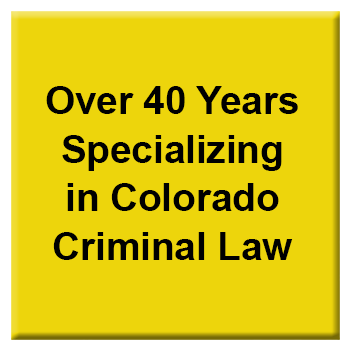 H. Michael Steinberg, is a Denver, Colorado criminal defense lawyer with over 40 years of day to day courtroom experience – specializing in Colorado Criminal Law along the Front Range. He will provide you with a free initial case consultation to evaluate your legal issues and to answer your questions with an honest assessment of your options. Remember, it costs NOTHING to discuss your case. Call now for an immediate free phone consultation.
H. Michael Steinberg, is a Denver, Colorado criminal defense lawyer with over 40 years of day to day courtroom experience – specializing in Colorado Criminal Law along the Front Range. He will provide you with a free initial case consultation to evaluate your legal issues and to answer your questions with an honest assessment of your options. Remember, it costs NOTHING to discuss your case. Call now for an immediate free phone consultation.
Helping Clients To Make Informed Decisions In the Defense of Colorado Criminal Cases.
Contact A Lawyer with Three Decades of Experience as a Denver Criminal Attorney at The Steinberg Colorado Criminal Defense Law Firm today.
Colorado Defense Lawyer H. Michael Steinberg provides solid criminal defense for clients throughout the Front Range of Colorado – including the City and County courts of Adams County, Arapahoe County, City and County of Boulder, City and County of Broomfield, City and County of Denver, Douglas County, El Paso County – Colorado Springs, Gilpin County, Jefferson County, Larimer County, and Weld County,…. and all the other cities and counties of Colorado along the I-25 Corridor… Remember Never Ever Make A Statement To The Police.
Other Articles of Interest:
- Your Miranda Rights I
- Your Miranda Rights
- Arrested: What Now?
- Arrested: What Now?
- The 5th and 6th Amendments












